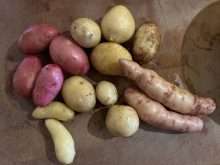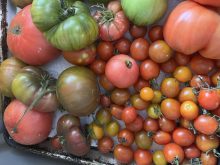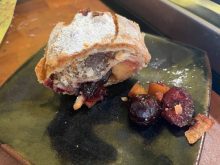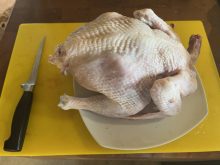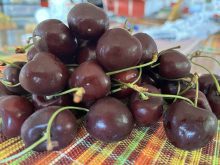My son recently served me a meal of spatchcocked (butterflied) chicken. It was sensational, crisp and juicy. “Butterflied is the only way I roast a whole bird anymore,” he told me.
Then I watched as he made brownies. His recipe was more complex than mine, and he spent longer on the process. They were addictive, moist in the middle. Better than mine.
That good food and my son’s attentiveness reminded me that good science makes better cooks. It also reminded me of a professional cooking school in Vancouver back in the early 1980s, when one of my chefs chastised me. “You are asking the wrong question at this point, mademoiselle,” he said. “For now, ask how, not why. ”
But how and why in the kitchen are inextricably linked to becoming a better cook. So here are my Top 10 + 1 “how and why” food books, in random order. First we eat, then we read, and eat again.
1. The Food Lab: Better Home Cooking Through Science, by J. Kenji López-Alt
A doorstopper loaded with photographs and high-results recipes, dense with practical applied science from an MIT engineering geek who loves cooking.
2. The New Making of a Cook, by Madeleine Kamman
The bible, starters to sweets, for a generation of professional chefs. Kamman, a Michelin-trained chef, blended science with an impeccable palate and technique.
3. The New Best Recipe, by the editors of Cook’s Illustrated
Cook’s Illustrated tests a dish’s variables sixteen ways to Sunday to make the best possible version. A valuable, food-splattered resource, also starters to sweets.
4. Vegetarian Cooking for Everyone, by Deborah Madison
The best vegetable-based book ever written. Creative, accessible, and delicious.
5. CookWise: The Secrets of Cooking Revealed (The Hows and Whys of Successful Cooking with over 230 Great-Tasting Recipes), by Shirley O. Corriher
A gold mine from a food-and-science geek. “What This Recipe Shows” explains each dish’s ingredients, techniques, and culinary/scientific principles.
6. Tartine Bread, by Chad Robertson
Artisanal sourdough bread demystified: the complexities of exceptional breads with character, crumb, and crust. Learn to think in ratios and buy a good scale.
7. Charcuterie: The Craft of Salting, Smoking and Curing, by Michael Ruhlman and Brian Polcyn
Clear details and ratios for making the best links. Now you really need that scale.
8. The Art of Fermentation: An In-Depth Exploration of Essential Concepts and Process From Around the World, by Sandor Katz
From kraut, kimchi and kombucha to sourdough, this book will get you bubbling your own bacteria.
9. Batch: Over 200 Recipes, Tips and Techniques for a Well-Preserved Kitchen, by Joel McCharles and Dana Harrison
Canning, dehydrating, fermenting, cellaring, salting, smoking or infusing, organized by individual ingredients with myriad ways to transform each.
10. Salt Heat Acid Fat: Mastering the Elements of Good Cooking by Samin Nosrat
Cook by the four tastes. Quirky illustrations and exuberant language.
11. On Food and Cooking: The Science and Lore of the Kitchen, by Harold McGee
Hardcore science from a food geek. No recipes.
Roasted Butterflied Chicken
From The Food Lab by J. Kenji López-Alt. Butterflying equalizes the cooking time needed for breast meat and legs. Serves 4.
Read Also

Gentle treatments for pain in the neck
Heading toward year-end, people unknowingly tense up against the cold and busyness, causing neck pain that can often be treated with appropriate support and gentle mobility, athletic therapist Kathlyn Hossack says.
- 1 whole chicken, 3-4 lbs.
- 1 tsp. kosher salt for dry-brining plus more for roasting
- 1 tbsp. olive oil
- Freshly ground black pepper to taste
Place the bird breast side down on a cutting board. Use poultry shears or kitchen scissors to cut alongside the backbone from the pope’s nose up to the neck. Repeat on the other side of the backbone. Remove and reserve the backbone for stock making.
Flip the bird over. Firmly press down on the breastbone with the heel of your hand. You should hear or feel it crack as the bird flattens. Tuck each wing tip under the breasts.
Loosen the skin by running your hand between the skin and breast meat, starting at the base of the breast. Rub 1 tsp. kosher salt all over the meat under the skin. Place on a rack on a baking sheet and chill, uncovered, overnight if time allows.
Preheat oven to 450 F. Position an oven rack in the centre of the oven.
Dry the chicken skin and meat under the skin with paper towels. Rub oil all over the skin and meat. Season lightly with salt and pepper.
Centre bird on a rack on top of a foil- lined rimmed baking sheet. Roast uncovered until the thickest part of the breast closest to the breastbone registers 140 F and the joint between thigh and drum registers at least 160 F.
Remove from the oven. Let rest for 10 to 15 minutes before carving.




